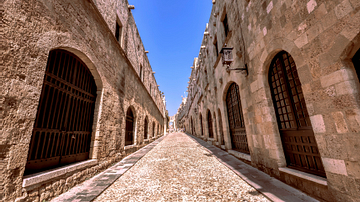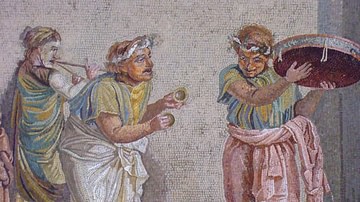Illustration
The mosaic from Roman Britain, features Bacchus riding on a tiger rather than the more usual spotted leopard, referring to the myth that the god visited India. Appropriately enough, the mosaic was discovered during building work on the premises of the east India Company in 1803 CE. From Leadenhall Street, London, UL, 1st or 2nd centuries CE. (The British Museum, London)
About the Author
Cite This Work
APA Style
Amin, O. S. M. (2016, April 20). Leadenhall Street Mosaic. World History Encyclopedia. Retrieved from https://www.worldhistory.org/image/4970/leadenhall-street-mosaic/
Chicago Style
Amin, Osama Shukir Muhammed. "Leadenhall Street Mosaic." World History Encyclopedia. Last modified April 20, 2016. https://www.worldhistory.org/image/4970/leadenhall-street-mosaic/.
MLA Style
Amin, Osama Shukir Muhammed. "Leadenhall Street Mosaic." World History Encyclopedia. World History Encyclopedia, 20 Apr 2016, https://www.worldhistory.org/image/4970/leadenhall-street-mosaic/. Web. 20 Apr 2025.








